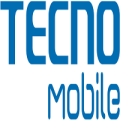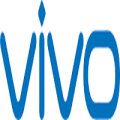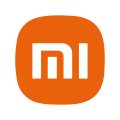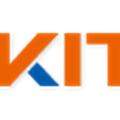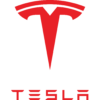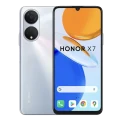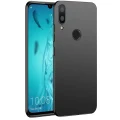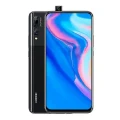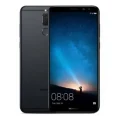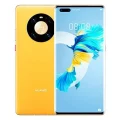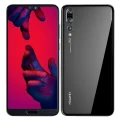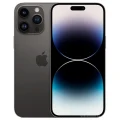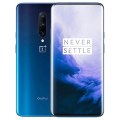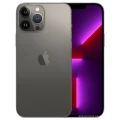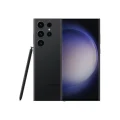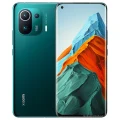- Awesome page
- Latest Mobile
- Smartphones
- Google Pixel 7
Google Pixel 7
Google Pixel 7 Price in Bangladesh
There are now two versions of the Google Pixel 7 available: 128GB/8GB and 256GB/8GB. The current price of the Google Pixel 7 in Bangladesh is 45,000 taka. The 4355mah battery of the Pixel 7 features rapid charging. This gadget is powered by the Google Tensor G2 (4 nm) chipset and is running Android 13.
Specifications
General
| Model | Google Pixel 7 |
| Announced | 09-10-2022 |
| Released | 13-10-2022 |
| Status | Available |
| Official price | 8GB 128GB ৳45,000 |
Design
| Dimensions | 155.6 x 73.2 x 8.7 mm (6.13 x 2.88 x 0.34 in) |
| Weight | 195.5 g (6.91 oz) |
| Colors |
Obsidian, Lemongrass, Snow |
Network
| Technology | GSM / CDMA / HSPA / EVDO / LTE / 5G |
| 2G Network |
GSM 850 / 900 / 1800 / 1900 CDMA 800 / 1700 / 1900 |
| 3G Network |
HSDPA 850 / 900 / 1700(AWS) / 1900 / 2100 CDMA2000 1xEV-DO |
| 4G Network |
1, 2, 3, 4, 5, 7, 8, 12, 13, 14, 17, 18, 19, 20, 25, 26, 28, 29, 30, 32, 38, 39, 40, 41, 42, 46, 48, 66, 71 |
| 5G Network |
1, 2, 3, 5, 7, 8, 12, 28, 41, 66, 71, 77, 78, 258, 260, 261 Sub6/mmWave - GD1YQ 1, 2, 3, 5, 7, 8, 12, 28, 41, 66, 71, 77, 78 Sub6 - GTT9Q |
| GPRS <strong>GPRS</strong> (General Packet Radio Service) is a packet oriented mobile data service on the 2G and 3G cellular communication system's global system for mobile communications (GSM), Generally, GPRS is used for the purpose of wireless data transfer, such as sharing pictures and videos or browsing the Internet via a mobile phone connection. | |
| EDGE <strong>EDGE</strong> (Enhanced Data GSM Environment) is a wireless network technology generally considered the next step in the 2G network offers data transfer rates up to four times faster than ordinary GSM networks, Generally, EDGE is used for the purpose of wireless data transfer, such as sharing pictures and videos or browsing the Internet via a mobile phone connection. | |
| Speed | HSPA 42.2/5.76 Mbps, LTE-A (CA), 5G |
Display
| Display Type <strong>Display Technology => </strong> A number of display technologies and types used in mobile phones => TFT (Thin Film Transistor), IPS (In-Place Switching), OLED (Organic Light Emitting Diode), AMOLED (Active-Matrix Organic Light-Emitting Diode), Super AMOLED (an even advanced version of AMOLED), Resistive Touchscreen (Resistive touchscreens contain two layer of conductive material with a very small gap between them which acts as a resistance), Capacitive Touchsceen (Capacitive touchscreen technology consists of a layer of glass coated with a transparent conductor) | AMOLED capacitive touchscreen, 16M colors |
| Size | 6.3 inches, 95.8 cm2 (~80.8% screen-to-body ratio) |
| Resolution | 1080 x 2400 pixels, 20:9 ratio (~418 ppi density) |
| Features |
Always-on display 90Hz, HDR10+ |
Camera
Main camera
| Camera Setup | Dual |
| Primary <strong>Camera</strong> is able to capture photographs and usually videos, The most important characteristics of a camera are the resolution (measured in megapixels), lens focus type (fixed or automatic), higher megapixel cameras are known to capture higher quality photos, but not always a good measurement of the photos quality. |
50 MP, f/1.9, 25mm (wide), 1/1.31&quot;, 1.2µm, Dual Pixel PDAF, Laser AF, OIS 12 MP, f/2.2, 17mm, 114˚ (ultrawide), 1.25µm |
| Features |
Dual-LED flash, Pixel Shift, Auto-HDR, panorama |
| Video | 4K@30/60fps, 1080p@30/60/120/240fps; gyro-EIS |
Selfie camera
| Camera Setup | Single |
| Primary <strong>Camera</strong> is able to capture photographs and usually videos, The most important characteristics of a camera are the resolution (measured in megapixels), lens focus type (fixed or automatic), higher megapixel cameras are known to capture higher quality photos, but not always a good measurement of the photos quality. |
10.8 MP, f/2.2, 19mm (ultrawide), 1/3.1&quot;, 1.2µm |
| Features |
Auto-HDR, panorama |
| Video | 4K@30fps, 1080p@30/60fps |
Hardware
| Chipset <strong>Chipset</strong> is a group of integrated circuits designed to perform one or a more dedicated functions, often with real time computing constraints, Popular smartphones are equipped with more advanced embedded chipsets that can do many different tasks depending on their programming. | Google Tensor G2 (4 nm) |
| CPU <strong>CPU</strong> (Central Processing Unit) mostly known as processors, CPU processes instructions in order to carry out certain functions that make your device operate properly. Processors are often described as the brain of computers, smartphones and tablets, Smartphones and tablets rely on processors to carry out their every task, Processors are an incredibly important factor in selecting any type of computing device, including your smartphone. | Octa-core (2x2.85 GHz Cortex-X1 & 2x2.35 GHz Cortex-A76 & 4x1.80 GHz Cortex-A55) |
| GPU <strong>GPU</strong> (Graphics Processing Unit) is a single-chip processor designed to rapidly manipulate and alter memory to accelerate the creation of images in a frame buffer intended for output to a display, This includes things such as lighting effects, object transformations, and 3D motion. | Mali-G710 MC10 |
| RAM (Memory) <strong>RAM</strong> (Random Access Memory) is a type of computer memory that can be accessed randomly, any byte of memory can be accessed without touching the preceding bytes that allows information to be stored and accessed quickly from random locations. RAM is the most common type of memory found in computer systems, smartphones, tablets and other electronic devices. | 8 GB |
| Internal Storage <strong>Internal Storage</strong> is a data storage space (flash memory) mostly used in smartphones, tablets and other electronic devices where operating system, apps, music, photos, videos, files and other user data Is stored. | 128/256 GB UFS 3.1 |
| Sensors <strong>Sensors</strong> are electronic components that detects and responds to some type of input from the physical environment. The specific input could be light, heat, motion, moisture, pressure and location, The output is generally a signal that is converted to use in computing systems, a location sensor, such as a GPS receiver is able to detect current location of your electronic device. |
Fingerprint (under display, optical), accelerometer, gyro, proximity, compass, barometer |
Connectivity
| Bluetooth <strong>Bluetooth</strong> is a wireless communications technology for exchanging data between mobile phones, headsets, computers and other network devices over short distances without wires, Bluetooth technology was primarily designed to support simple wireless networking of personal consumer devices. | 5.3, A2DP, LE, aptX HD |
| Infrared <strong>Infrared</strong> connectivity is an old wireless technology used to connect two electronic devices. It uses a beam of infrared light to transmit information and so requires direct line of sight and operates only at close range. | |
| USB | USB Type-C 3.1 |
| GPS <strong>GPS</strong> The Global Positioning System is a satellite-based radio navigation system, GPS permits users to determine their position, velocity and the time 24 hours a day, in all weather, anywhere in the world, In order to locate your position, your device or GPS receiver must have a clear view of the sky. | Yes, with dual-band A-GPS, GLONASS, GALILEO, QZSS, BDS |
| NFC <strong>NFC</strong> (Near field communication) is a set of standards for smartphones and similar devices to establish peer-to-peer radio communications with each other by touching them together or bringing them into proximity, usually no more than a few inches. |
Battery
| Battery Type <strong>Battery Type => </strong> Cell phones run on various kinds of batteries depending on the manufacturer, phone size or shape and features. There are basically four types of cell phone batteries => Lithium Polymer, Lithium Ion, Nickel Metal Hydride and Nickel Cadmium. | Non-Removable Li-Po |
| Capacity <strong>Battery Capacity</strong> is a measure (typically in Amp-hr) of the charge stored by the battery, and is determined by the mass of active material contained in the battery. The battery capacity represents the maximum amount of energy that can be extracted from the battery under certain conditions. | 4355 mAh |
| Charging Charging | Fast charging 30W, 50% in 30 min (advertised) Fast wireless charging 21W Reverse wireless charging USB Power Delivery 3.0 |
Google Pixel 7 Redefines Smartphone Excellence
The tech world has been buzzing with anticipation, and the Google Pixel 7 is finally here. For tech enthusiasts, smartphone users, and dedicated Google Pixel fans, this review offers a comprehensive look at what makes the Pixel 7 a standout device. From its sleek design to its cutting-edge features, we’ll cover everything you need to know about this latest addition to the Pixel family.
Introduction to the Google Pixel 7
The Google Pixel 7 has arrived, and it promises to redefine smartphone excellence. It comes packed with features that cater to the needs of modern smartphone users, making it a highly anticipated release in 2024. This review will provide an in-depth analysis of the Pixel 7’s design, performance, camera capabilities, user interface, pricing, and overall value proposition.
Design and Build
When it comes to design, the Google Pixel 7 stands out with its minimalist yet sophisticated look. Crafted from premium materials, the smartphone boasts a sleek profile with dimensions that make it comfortable to hold and use. The front and back are protected by Corning Gorilla Glass Victus, ensuring durability and resistance to scratches.
The design philosophy behind the Pixel 7 emphasizes simplicity and functionality. The placement of the buttons and the fingerprint sensor is intuitive, making it easy for users to access essential functions without fumbling. The device is available in three stunning colors—Obsidian, Snow, and Lemongrass—that add a touch of elegance to its overall appearance.
The build quality of the Pixel 7 is commendable, with a sturdy aluminum frame that feels robust in hand. The IP68 rating ensures that the device is water and dust resistant, giving users peace of mind in various environments. Overall, the Pixel 7’s design and build are a testament to Google’s commitment to quality and user satisfaction.
Performance
Performance is a critical aspect of any smartphone, and the Google Pixel 7 does not disappoint. Powered by the Google Tensor G2 chip, the device delivers impressive speed and efficiency. Whether you’re multitasking, gaming, or streaming high-definition content, the Pixel 7 handles it all with ease.
Battery life is another area where the Pixel 7 excels. With a 4,614 mAh battery, the device offers all-day usage on a single charge. The adaptive battery feature learns your usage patterns and optimizes power consumption, ensuring that you have enough juice for your daily activities. Fast charging support further enhances the convenience, allowing you to quickly top up your battery when needed.
In comparison to its predecessor, the Pixel 6, the Pixel 7 showcases significant improvements in performance metrics. It also holds its own against competitors like the iPhone 14 and Samsung Galaxy S22, making it a strong contender in the flagship smartphone market. Users can expect a seamless and responsive experience, whether they are engaging in productivity tasks or leisure activities.
Camera Features
One of the standout features of the Google Pixel 7 is its camera system. The device is equipped with a dual-camera setup, featuring a 50MP wide lens and a 12MP ultra-wide lens. This combination allows users to capture stunning photos with exceptional detail and clarity.
The Pixel 7’s camera capabilities extend to video recording as well. It supports 4K video at 60fps, ensuring that your videos are smooth and lifelike. The addition of advanced stabilization technology further enhances the quality of your recordings, even in challenging conditions.
New features such as Night Sight and Magic Eraser make photography on the Pixel 7 a delightful experience. Night Sight allows you to capture bright and detailed photos in low-light environments, while Magic Eraser lets you remove unwanted elements from your images with a simple tap. Comparison shots reveal that the Pixel 7’s camera system outperforms many of its rivals, making it a top choice for photography enthusiasts.
User Interface and Software
The Google Pixel 7 runs on Android 13, offering a clean and intuitive user interface. The software experience is smooth and responsive, with minimal bloatware to clutter your device. Google has also included several unique features that enhance the overall user experience.
One of the highlights is the integration of Google Assistant, which allows you to perform various tasks using voice commands. From setting reminders to controlling smart home devices, Google Assistant is your reliable companion for everyday tasks. The Pixel 7 also includes features like Live Caption and Adaptive Sound, which cater to users with different needs and preferences.
Pre-installed apps such as Google Maps, Gmail, and YouTube are optimized for the Pixel 7, ensuring seamless performance and usability. Security is another area where the Pixel 7 excels, with regular updates and robust protection against threats. Overall, the software experience on the Pixel 7 is tailored to provide convenience, efficiency, and peace of mind.
Pricing and Value
Pricing is a crucial consideration for potential buyers, and the Google Pixel 7 offers excellent value for its price. The base model starts at $699, making it competitive with other flagship devices in the market. Considering its advanced features and capabilities, the Pixel 7 provides a compelling value proposition.
Subscribers to Google’s services can also benefit from exclusive deals and discounts, further enhancing the value of the Pixel 7. Whether you’re a long-time Pixel fan or a new user, the Pixel 7 offers a premium experience without breaking the bank. Its blend of performance, camera quality, and software features makes it a worthwhile investment for anyone looking to upgrade their smartphone.
Conclusion
In conclusion, the Google Pixel 7 is a remarkable device that sets a new standard for smartphones. From its elegant design and robust performance to its exceptional camera capabilities and user-friendly software, the Pixel 7 offers a comprehensive package that caters to the needs of modern users. Whether you’re a tech enthusiast, a smartphone user, or a Google Pixel fan, the Pixel 7 is sure to impress.
If you’re considering an upgrade or simply want to explore the latest advancements in smartphone technology, the Google Pixel 7 is a fantastic choice. Its combination of innovation, quality, and value makes it a standout device in the competitive smartphone market. Don’t miss the opportunity to experience the future of smartphones with the Google Pixel 7.














